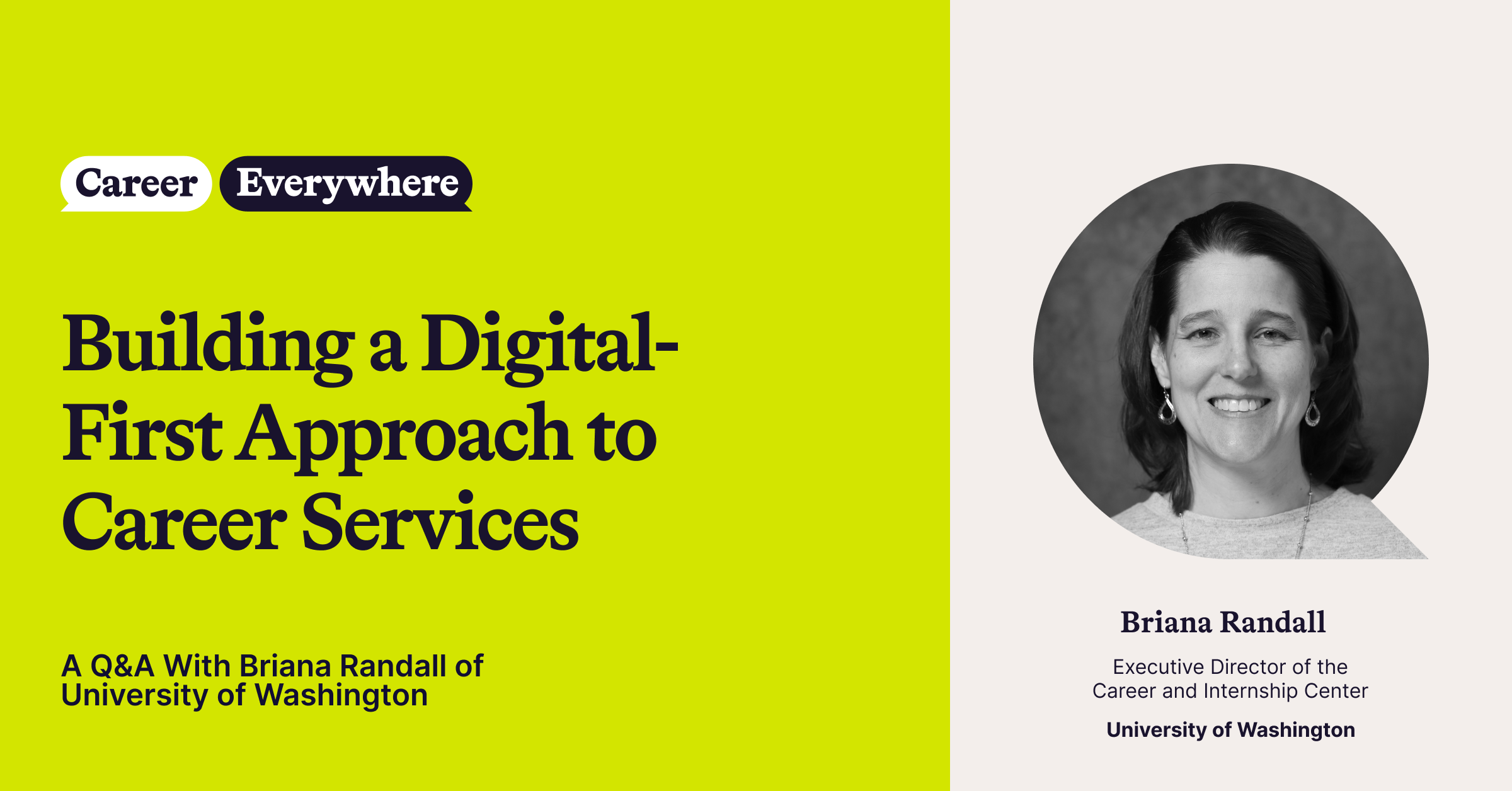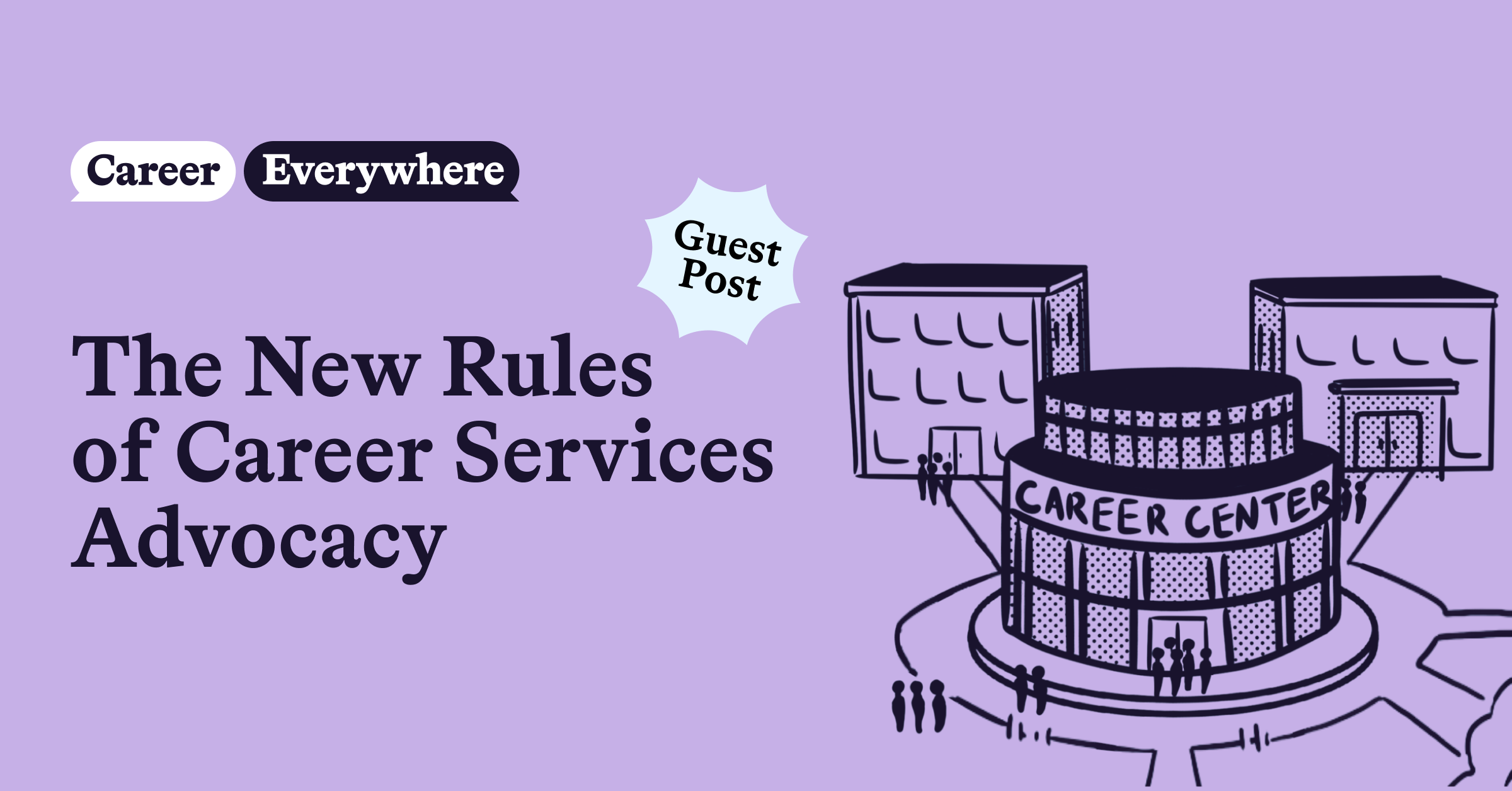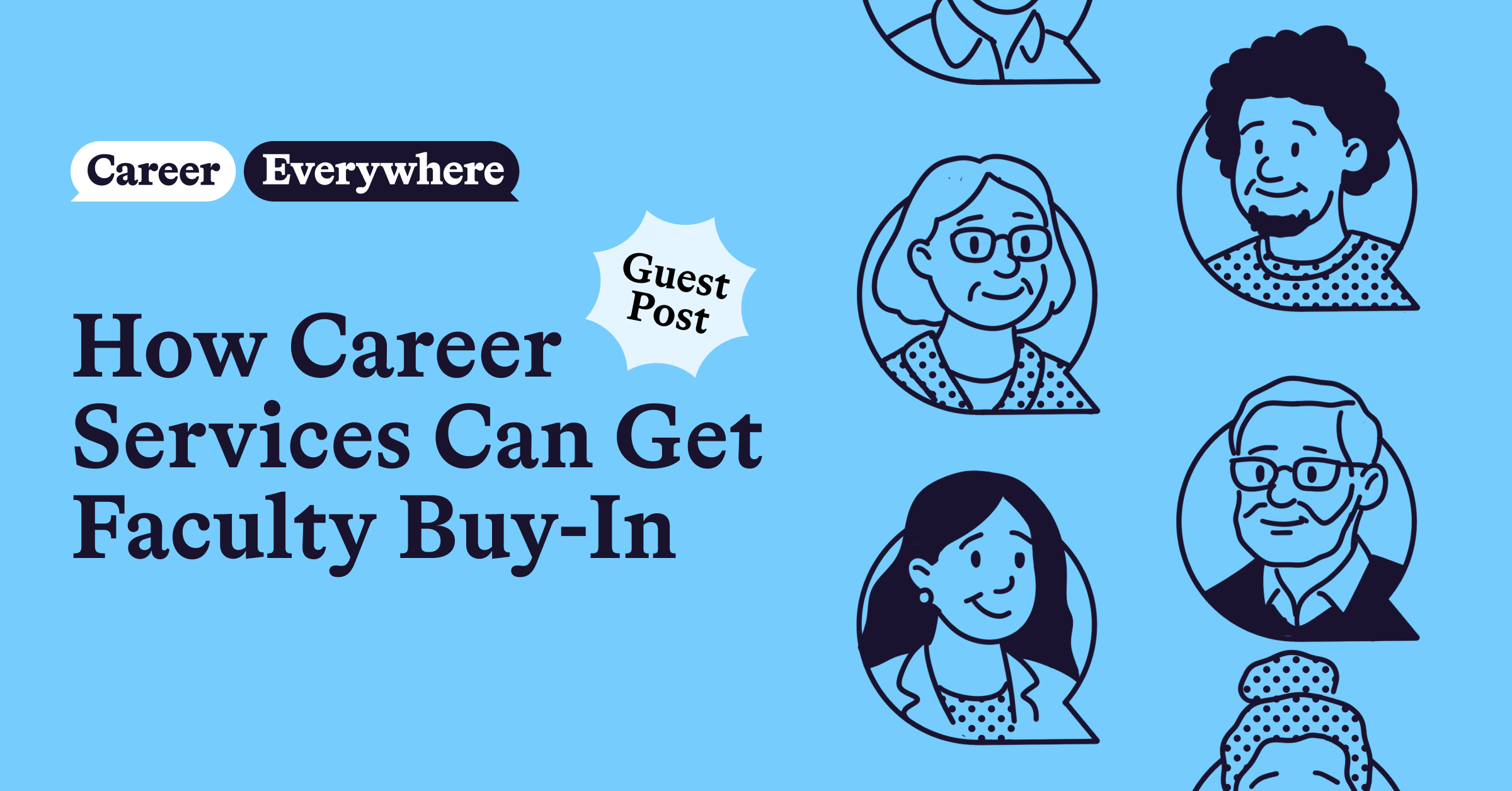
A Q&A With Briana Randall of University of Washington
After working in career services for more than 15 years, Briana Randall knows a thing or two about helping students find meaning and success in their careers. She also knows that in order to provide equal access and support for all students, career resources need to be available any time, anywhere.
That’s why Briana, as executive director of the University of Washington Career and Internship Center, and her team have invested so heavily in a digital-first approach to career services. Over the last decade, they’ve amped up their digital presence and built a virtual career center packed with diverse content (from internal and external sources), curated identity and career communities, mentor and skill-building resources, labor market data, graduate outcomes data, and more.
In this Q&A, Briana shares:
- Why her team made the move to a digital-first approach
- How they built curated career and identity communities
- How they balance content creation with their other day-to-day tasks
- What results her team has seen so far
- How she leverages the virtual career center to engage other partners on campus
To learn more from Briana, check out her webinar on how her team uses a digital-first approach to DEI.
1. Can you share why you do what you do, your background, the mission of your work?
I’ve been interested in career development work since I was a graduate student and I conducted research on career topics. I later entered the field as a career counselor myself, where I found that I really enjoyed other tasks like data management and assessment, as well. I’ve stayed in the field ever since, because I find the work to be so meaningful. I know that any role within my office has the potential to change the trajectory of someone’s life. Whether it be posting the one perfect internship for a student, sharing advice, or organizing a career fair, there’s excitement and variety in the work.
Our uConnect platform has allowed us to expand the reach of our work. We can make a difference for students with the resources that we cultivate and the ease with which we can now make them accessible. I find that really meaningful.
2. What made you commit to a digital-first approach to engaging students and your community? What were your goals?
I wasn’t the director at the time that we implemented uConnect (but I’m grateful to my predecessor for partnering with uConnect!). I did reinvigorate the uConnect platform shortly after I became director and just prior to the pandemic. What I saw was that students expected us to be content experts on every career and every field. Being that expert is not always possible, but creating Career Interest Communities on uConnect was a way to move in that direction. Whatever students are interested in, we now have a space for them with up-to-date resources.
With our platform, we’re able to show students that we have the expertise they’re seeking. With the pandemic, we built everything out further to ensure that students had access to whatever they needed, whenever they needed it.
We’re also able to cater to a wide variety of learning styles with our platform. Whether it be a webinar recording, a one-page handout, or a three-minute video about what someone does in their job, we’ve provided lots of ways for someone to consume information, which in turn allows us to provide more equitable access. Now, regardless of where someone lives, or if they don’t have time to make an appointment, or if they can’t speak to us during office hours, we can still serve them.
3. Did you use a phased approach when developing your platform? Why? How did it help?
When I began as director, we started our website revamp modestly by launching eight interest communities with blog entries, opportunities from Handshake, and a few other resources. We also launched eight static identity community pages with a welcome message, some tips, and a few additional resources. In the second year, which corresponded with COVID, we added individual Candid Career videos, student organizations, related campus offices, recorded webinars, PeopleGrove, LinkedIn Learning, a podcast, and Emsi Labor Market Insights. We also created and populated our DIY channels. In the summer of 2021, we amped up our identity pages, activating blogs on four of them and adding student stories and a few other resources.
When building our platform’s Career Interest Communities, we looked at several other schools, including some that use uConnect and some that don’t. We wanted to see what was provided, as well as the results of a student interest survey. We knew that we wanted a manageable amount of Interest Communities, and we aimed for under 10, starting with a draft list and deciding as a team.
We purposefully wanted to detangle major from career, so whenever possible, we tried not to use the name of specific majors in our community titles. In the future, we might add others, simply so the communities are more all-encompassing of what UW has to offer, which would make them more useful for entities like Admissions.
4. How have your staff roles transitioned to support the focus on digital creation and engagement? How do you motivate/inspire/assist your team?
This has shifted over time. The dynamic parts of the communities are managed by our coaching team. Each coach has three communities (two interest and one identity), for which they must blog weekly. We have one student employee who vets and approves job postings in Handshake, one who helps with images and banners, and one who finds Candid Career videos to feature on each interest page. Our program coordinator tags our events to the appropriate channels. Several other staff members post to our front page blog, switch out banners, upload new recordings, etc. It is totally a full team effort! As director, I manage many of the resources, videos, classes, etc. I will admit that it takes quite a bit of my time, but it can be a good break from the more challenging director tasks I need to work on.
Overall, our team has done a good job adjusting to having content creation as part of their roles. Our team saw the value for students and for our center, by making us more broadly appealing to campus partners. While individuals who thrive in heavy student coaching roles may not enjoy content creation, the management of communities is now baked into our position descriptions.
5. How do you advocate for resources and budget? How do you overcome objections from faculty, career team, other stakeholders?
To fund our uConnect platform, I presented it to a campus student tech fee committee as an additional member of our staff – something that provides valuable up-to-date information to people when they need it and how they need it. It was easy for the committee to see the value of the platform; it’s free to access and it supports our entire campus. The platform has also proved to be a powerful presence for parents and admissions. Having a digital platform helps us get buy-in from campus partners and have more credibility across campus.
6. What have been the outcomes of this new approach?
Our virtual career center has had positive outcomes for students who look at our individual resources, but also has had the positive outcome of students trusting us and being more impressed with us as a career center. Employers, too, have benefited from our resources and have provided feedback that we’ve created a great experience for them as they work with us, our students, and our graduates.
Over the past five years, career development opportunities and support have become a large part of the reason why someone would choose to go to a college. To support this, we’ve added an ‘Elevating Career’ section to our platform to showcase our career statistics to students and to highlight the partners that we have.
We see our platform and our work as being about social justice, about creating a return on investment for our students, and about supporting the Washington economy. As the director, I put a lot of time and effort into the website, but spending the time on the nitty-gritty has given us visibility on a higher level, and it’s all for that greater cause.
To learn how uConnect can help you put all of your career resources in one place and make them accessible 24/7, fill out the form below to schedule a demo.


